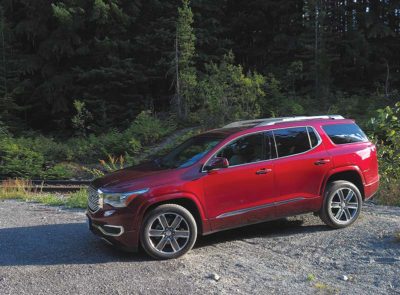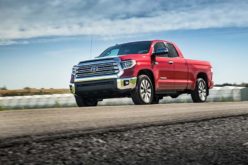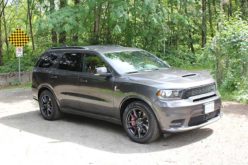2017 GMC Acadia
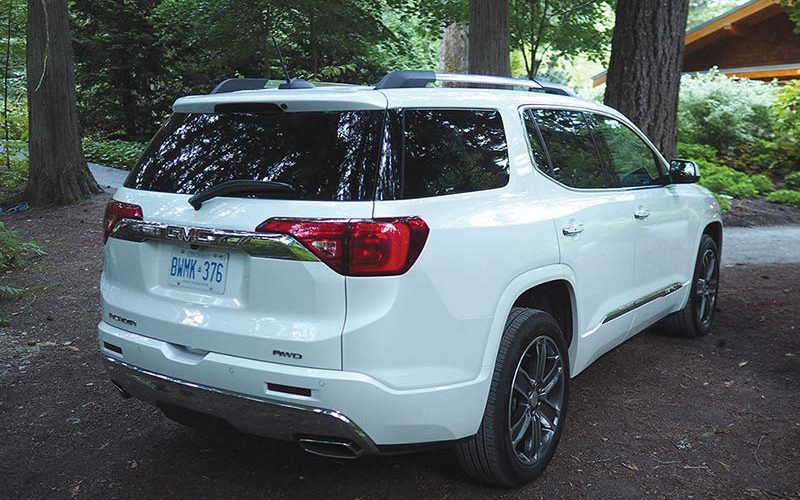
The GMC Acadia has undergone a lot of changes entering its second generation. Case in point: the crossover has dropped a weight class, losing 700 pounds in the process, and is now competing in the mid-size segment as opposed to the previous full-size. The vehicle also gets a different set of looks, more safety features and two brand-new powertrains.
GMC invited us on a drive from Richmond to Whistler and back to get a sense of how much has changed for the Acadia in just one model year. The route wasn’t chosen arbitrarily, however, as venturing from the city to the great outdoors is what many prospective customers will likely be doing often.
“The roots of what Acadia is, is that it embraces the chaos of life and is ready, willing and able to seek out everyday adventure. Big or small,” says GMC brand manager Mark Alger during a product presentation. “It’s been re-engineered for family adventure.”
Though the exterior has been completely redesigned, you can definitely still see the family resemblance. The company says the outgoing version had a strong aesthetic influence from the truck world, whereas the 2017 is more aligned with the various sleek CUVs found in today’s marketplace.
Former blocky headlights have been replaced with shapelier units that wrap around to the front fenders. Regular trims receive halogen projectors while the upper-level Denali gets HIDs, and all are complemented with signature LED DRLs tracing the outer edge of the housings.
Not to be left out, the grille sports a curvier appearance than before, meeting up with the headlights on either side and outlined in chrome (the rugged All Terrain sports a dark aluminum theme). Filling the inside is a choice of triple slats or a cool polished 3-D mesh on Denalis.
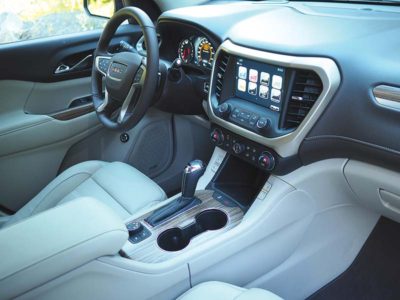
As I mentioned at the beginning, the Acadia has lost a significant chunk of mass, due to the implementation of additional high-strength steel.
“It’s lighter weight, produces better fuel economy, is more manoeuvrable, garage-able and more urban friendly for smaller driveways, smaller garages and smaller roads,” affirms Alger.
The overall footprint of the crossover may have shrunk, but interior room hasn’t been affected, meaning it caters to “outdoor enthusiasts who want more space for stuff than people,” he says. When all the rear seats are folded, there is 2,237 litres of cargo capacity ready for use. There’s even a nifty pull-out storage drawer behind the centre console to stash mobile devices or anything else you want hidden from prying eyes.
That’s not to say the Acadia can’t haul passengers when the occasion calls for it. Up to seven-passenger seating remains an option, and the split-folding second row can tilt and slide forward on both sides providing quick and easy access to the third row. A neat industry-first function is the rear seat alert. Once each trip, if the rear door(s) are opened either 10 minutes before the vehicle is started or during, the system can audibly and visually remind the driver to check the back before leaving.
GMC has introduced two new engines to the lineup: a 2.5-litre four-cylinder Ecotec mill “designed for the person who really wants fuel economy,” and a 3.6-litre V6 “for people looking for performance and towing capability,” says Alger, adding fuel economy is still there, but a little lower down the priority list.
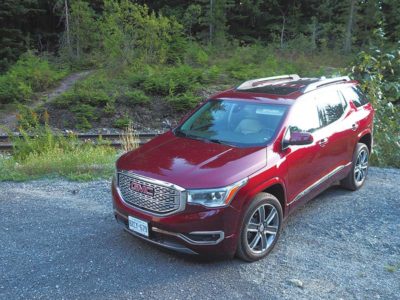
The engine features cylinder deactivation, so during cruising less gas is consumed — we hovered between 12 and 14 L/100 km in mixed city and highway conditions. The four-cylinder is reported to yield approximately 10.2 L/100 km in a similar environment.
We didn’t get to test towing, but the V6 is rated with a 4,000-pound towing capacity.
The Acadia is available with front-wheel drive or all-wheel drive, and a drive mode selector to alter the powertrain to better suit changing mood and road terrain. FWD offers Normal, Snow, Sport and Trailer/Tow settings, and AWD ditches Snow adding 2X4 and Off-Road.
Prices for the 2017 GMC Acadia start at MSRP $34,995 (SLE FWD), and tops out at $54,695 (Denali AWD).




